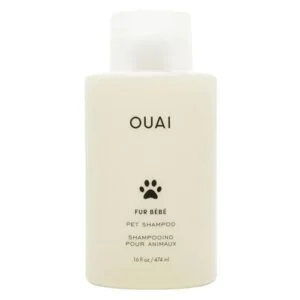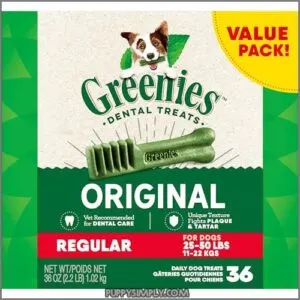This site is supported by our readers. We may earn a commission, at no cost to you, if you purchase through links.

The data tells a pretty clear story here. In the UK, Rottweilers typically make it to 10.6 years, while studies from Italy put the average closer to 9 years.
What really matters for your dog though? It all comes down to genetics, what you’re feeding them, how much exercise they get, and staying on top of vet visits.
Sure, Rottweilers don’t win any longevity awards. But knowing what affects their lifespan means you can give yours the best shot at a longer, healthier life—and catch problems before they get serious.
Table Of Contents
- Key Takeaways
- Rottweiler Breed Overview and History
- Average Rottweiler Life Expectancy
- Key Factors Affecting Rottweiler Lifespan
- Rottweiler Life Stages and Care
- How to Increase Rottweiler Longevity
- Comparing Rottweiler Lifespan to Other Breeds
- Top 5 Rottweiler Health and Care Products
- Frequently Asked Questions (FAQs)
- Are there any lifestyle factors that can influence a Rottweiler’s lifespan?
- How does the lifespan of a Rottweiler compare to other dog breeds?
- Is there any research being done on ways to extend the lifespan of Rottweilers?
- What are some tips for promoting a long and healthy life for a Rottweiler?
- Do Rottweilers live longer in certain climates?
- Can spaying affect female Rottweiler lifespan significantly?
- Whats the oldest recorded Rottweiler age?
- Do mixed Rottweilers live longer than purebreds?
- How does weight impact Rottweiler longevity?
Key Takeaways
- Rottweilers typically live 9-10 years, with females averaging nearly one year longer than males due to hormonal factors and reduced cancer risk.
- Genetics and breeding quality significantly impact lifespan—responsible breeders who screen for hip dysplasia (22% prevalence) and heart conditions can help extend your dog’s life.
- Proper care can add years to your Rottweiler’s life through quality nutrition, regular exercise, preventive veterinary checkups, and maintaining ideal weight to reduce joint stress.
- Cancer is the leading cause of death in Rottweilers, affecting over 45% of deaths, making early detection through regular vet visits crucial for longevity.
Rottweiler Breed Overview and History
Rottweilers trace their roots back to Roman drover dogs that were brought to southern Germany and crossbred with local dogs in the town of Rottweil.
Originally bred as working dogs, they served multiple roles including herding cattle, pulling meat carts to market, and guarding property with their impressive strength and unwavering loyalty.
Origins and Historical Roles
Rottweilers have roots that stretch back to ancient Rome. These sturdy dogs traveled with Roman legions across Europe, working as cattle drivers.
When the Romans reached what’s now Rottweil, Germany, the dogs stayed behind and became essential to local life.
Picture a dog breed that marched alongside Roman legions across Europe, eventually becoming the backbone of medieval German commerce—that’s the fascinating origin story of the Rottweiler. These Roman drover dogs reached Rottweil, Germany, where they developed their working heritage through:
- Herding cattle to market
- Pulling butchers’ carts laden with meat
- Guarding money pouches around owners’ necks
- Protecting livestock from predators
- Serving as loyal family companions
This German emigrant breed earned official recognition in 1931, cementing their legendary status.
Physical Characteristics and Appearance
When you spot a Rottweiler from across the street, there’s no mistaking that powerful, square-built frame that screams “I mean business.” Their muscular build features a broad chest with distinctive rust-colored chest markings against their black coat color.
You’ll notice those medium-sized triangular ears with forward ear carriage, plus the characteristic facial markings—rust patches above the eyes and on the cheeks that give them their signature look.
Temperament and Family Suitability
You’ve probably heard Rottweilers called “gentle giants,” and there’s truth to that – but owning one isn’t a decision to take lightly. Yes, they form incredibly strong bonds with their families and show amazing loyalty.
The catch? That same protective nature means you’ll need to invest serious time in early socialization and training, especially if you have kids or want your dog to get along with others.
Behind that powerful frame and intimidating presence lies a dog that’s often called a “gentle giant” – but is your family truly ready for a Rottweiler’s unique personality? These dogs bond deeply with their families, showing striking loyalty and affection. However, their protective instincts require early socialization and consistent training to ensure proper child compatibility and canine friendliness.
Key temperament considerations:
- Strong protective instincts make them excellent family dogs but require structured training to prevent overguarding behaviors
- High socialization importance from puppyhood ensures good child friendliness and appropriate Rottweiler behavior around strangers
- Not ideal for apartment living due to their size and need for mental stimulation and physical exercise
Average Rottweiler Life Expectancy
Rottweilers usually live 9-10 years, which is shorter than many dog breeds due to their large size and genetic predisposition to certain health conditions.
Your Rottweiler’s actual lifespan can vary based on factors like gender, breeding quality, and overall health management throughout their life.
Typical Lifespan Range (9-10 Years)
Most Rottweilers live 9 to 10 years, making them shorter-lived than many smaller dog breeds.
That’s pretty typical for large working dogs, though individual lifespans can vary quite a bit depending on genetics and care.
Most Rottweilers live between 9 to 10 years, which places them on the shorter end of the canine lifespan spectrum compared to smaller breeds. This typical lifespan reflects the breed standards for large working dogs, though statistical variations exist based on several influencing factors.
| Lifespan Category | Age Range |
|---|---|
| Below Average | 7-8 years |
| Average Longevity | 9-10 years |
| Above Average | 11-12 years |
Your Rottweiler’s life expectancy depends on genetics, health issues, and care quality throughout their lifetime.
Male Vs. Female Longevity
Your female Rottweiler might just outlive her male counterpart by nearly a year, and the data backs this up. UK veterinary records show females reach a median age of 9.5 years compared to males at 8.7 years.
This gender lifespan gap stems from hormonal influence on cancer prevalence and size differences affecting common Rottweiler health problems.
Lifespan Statistics From Different Countries
Rottweiler lifespans show interesting patterns when you look at data from different countries. UK studies put the median at 9.0 years, and Australian research on neutering found similar results for intact dogs. Over in North America, the databases show 9.4-9.5 years on average. Germany reports slightly higher at 10.6 years.
What’s really sobering is that Canadian breed surveys found cancer causes over 45% of Rottweiler deaths – a major factor affecting how long these dogs live no matter where they are.
While Rottweiler life expectancy varies globally, veterinary data reveals consistent patterns across countries. UK mortality data shows a median lifespan of 9.0 years, while Australian neutering impact studies found similar longevity in intact dogs. North American longevity databases report 9.4-9.5 years average. German breed data indicates 10.6 years, and Canadian breed surveys confirm cancer affects over 45% of deaths, influencing breed health outcomes worldwide.
Owners should prioritize regelmäßige Pflege to promote their Rottweiler’s well-being.
21 Real-World Rottweiler Lifespan Examples
Looking at real data reveals significant individual variation in Rottweiler life expectancy. Australian research tracked thousands of dogs, showing intact males averaged 8.5 years while intact females reached 9.0 years.
However, anecdotal lifespans tell a different story—some Rottweilers lived well beyond 13 years when environmental impact and owner dedication optimized their care, demonstrating how lifestyle factors can encourage a long Rottweiler life despite common health issues.
Research suggests that neuter status impacts Rottweiler longevity.
Key Factors Affecting Rottweiler Lifespan
Your Rottweiler’s lifespan depends on more than just luck. Genetics, size, health issues, and breeding quality all play major roles in how many years you’ll have together.
When you understand these factors, you can make choices that help your dog live longer.
Your Rottweiler’s lifespan isn’t just a roll of the dice—several key factors directly impact how long they’ll be by your side. Understanding genetics, size differences, common health problems, and breeding quality gives you the power to make informed decisions that can add precious years to your dog’s life.
Genetic Health and Breeding Practices
Smart breeding practices directly impact your Rottweiler’s lifespan through genetic health screening. Hip dysplasia affects 22% of the breed, while elbow dysplasia prevalence reaches 36.7%.
Ethical breeders use screening compliance to reduce SAS predisposition (5.2% prevalence) and DCM risks.
Inbreeding effects worsen these Rottweiler health issues, making responsible dog breeding and genetics essential for longevity.
Impact of Size and Gender
Here’s something interesting about Rottweilers: female dogs typically live about a year longer than males. It’s not just coincidence—there are real biological reasons behind this pattern.
Several factors explain why gender affects your Rottweiler’s lifespan:
- Weight correlation: Larger males put more stress on joints and organs
- Body composition: Female muscularity creates less strain on cardiovascular systems
- Hormonal protection: Estrogen provides natural disease resistance in females
- Growth patterns: Males reach larger sizes faster, which can accelerate aging
Knowing these differences helps you tailor care to your specific dog’s needs.
Understanding these factors affecting dog lifespan helps you provide targeted care for your Rottweiler’s specific needs.
Common Health Issues and Causes of Death
Several serious conditions can shorten your Rottweiler’s life. Cancer prevalence runs high, especially osteosarcoma affecting bones and lymphoma targeting organs.
Hip dysplasia causes joint pain and mobility issues. Heart conditions like subaortic stenosis threaten cardiovascular health.
Gastric dilatation-volvulus creates life-threatening bloat risks requiring emergency surgery. These Rottweiler health issues demand early detection and proper management.
Overbreeding and Its Effects
When breeders put money first, your Rottweiler pays the price. Overbreeding leads to genetic problems, behavioral issues, and shorter lifespans when corners get cut.
Good breeders focus on preventing genetic health problems. Puppy mills just want to pump out as many dogs as possible.
Rottweiler health problems get worse when breeders skip proper practices. It raises real questions about what kind of life your dog will have.
Health issues impacting Rottweilers multiply when proper Rottweiler breeding practices aren’t followed, raising serious ethical concerns about your dog’s future wellbeing.
Rottweiler Life Stages and Care
Your Rottweiler goes through three major life stages, each with completely different care requirements.
Getting these right can help your dog live closer to that 9-10 year lifespan – or even beyond it.
Your Rottweiler’s care needs change dramatically as they move through three distinct life stages. Understanding these phases helps you provide the right nutrition, exercise, and health monitoring to extend their 9-10 year lifespan.
Puppyhood (0–2 Years): Growth and Socialization
Rottweiler puppies pack serious potential into tiny bodies. These future 100-pound guardians start small but grow fast, gaining 2-4 pounds weekly during their crucial development phase.
Getting the foundation right now makes all the difference for the adult dog they’ll become. Your puppy needs structured care that supports their rapid physical growth while building social skills.
The training you do today shapes whether you’ll have a confident, well-adjusted companion or an anxious, reactive dog later.
Think of a Rottweiler puppy as a 100-pound adult trapped in a 10-pound body—they’re growing at breakneck speed and need the right foundation to reach their full potential. During this critical period, your Rottweiler puppies require structured puppy care that balances rapid growth with essential early socialization. Proper puppy training sets the stage for a well-adjusted adult dog.
- Early Socialization (8-16 weeks): Expose your puppy to various people, sounds, and environments during this critical window to prevent fearfulness and aggression later
- Growth Milestones: Monitor weight gain of 2-4 pounds weekly, with most Rottweilers reaching 75% of adult weight by 12 months
- Nutritional Needs: Feed large-breed puppy formula with controlled calcium levels to foster proper bone development and prevent joint issues
- Vaccination Schedule: Follow your vet’s protocol for core vaccines at 6, 9, 12, and 16 weeks to protect against deadly diseases during vulnerable growth phases
Adulthood (2–7.5 Years): Maintenance and Health
Your Rottweiler’s prime adult years from 2 to 7.5 are when everything clicks into place—they’re at their physical and mental peak, but staying there takes consistent care.
Your Rottweiler’s prime adult years from 2 to 7.5 are like the sweet spot of a well-tuned engine—everything’s running smoothly, but regular maintenance keeps it that way.
Adult exercise needs remain high—daily walks plus structured activities prevent weight gain. Diet management becomes essential as metabolism slows.
Regular checkups catch Common Rottweiler Health Issues early, while dental hygiene prevents heart complications that affect Rottweiler Health long-term.
Senior Years (7.5+ Years): Aging Signs and Adjusted Care
Most Rottweilers hit their senior years around 7.5 years old, and catching these early changes can genuinely extend their time with you by months or even years.
Like a well-loved car showing its first signs of wear, your Rottweiler enters their golden years around 7.5 years old, and recognizing these subtle changes early can add precious months or even years to their life.
Watch for aging signs like slower movement, joint stiffness, and reluctance to jump. Senior dogs need specialized senior diet adjustments, pain management strategies, and modified exercise routines to address mobility issues and potential cognitive decline affecting Rottweiler life expectancy.
How to Increase Rottweiler Longevity
While genetics play a role in your Rottweiler’s lifespan, you can greatly impact their longevity through proper care and preventive measures.
The right nutrition, exercise routine, veterinary care, and breeding decisions can add healthy years to your dog’s life.
Importance of Nutrition and Balanced Diet
What you feed your Rottweiler matters more than you might think. Each meal either supports their long-term health or slowly chips away at it, affecting how many quality years you’ll have together.
Every meal you serve your Rottweiler is either building their health or breaking it down—there’s no middle ground regarding nutrition’s impact on lifespan.
Quality Rottweiler nutrition requires high-protein, age-appropriate food with proper portion control to prevent obesity.
Understanding what to feed a Rottweiler and how much matters greatly—overfeeding reduces longevity while adequate hydration importance and targeted supplement use promote health throughout their 9-10 year lifespan.
Exercise and Mental Stimulation Needs
A couch potato Rottweiler wastes all that incredible potential. Daily exercise does more than burn calories—it actually adds years to their life.
A couch potato Rottweiler is like a sports car sitting in the garage—all that power and potential going to waste. Daily exercise isn’t just about burning calories—it’s about extending their lifespan.
Your Rottweiler needs structured physical stimulation through walks, jogging, and working activities. Mental enrichment through training benefits their cognitive health greatly.
Activity levels should match their age, with playtime importance increasing during their prime years for best Rottweiler health and longevity.
Preventive Veterinary Care and Vaccinations
Think of vet checkups as catching problems before they spiral out of control. Rottweilers already have shorter lifespans than we’d like, so these visits give you the chance to spot issues early—when they’re still manageable.
Regular vet checkups aren’t just routine appointments—they’re your Rottweiler’s best defense against the health problems that can cut their already short lifespan even shorter. Preventative care through wellness exams permits early detection of issues before they become life-threatening.
Your veterinary care plan should include:
- Dog vaccinations following proper vaccination schedules to prevent deadly diseases
- Parasite prevention treatments for heartworms, fleas, and ticks that weaken immunity
- Dental prophylaxis cleanings to prevent periodontal disease affecting heart health
- Blood work screening for breed-specific conditions like hip dysplasia
- Regular monitoring of weight and joint health in large breeds
This proactive approach to Rottweiler health and longevity can add precious years to your dog’s life.
Sterilization: Pros, Cons, and Lifespan Impact
Sterilization timing greatly impacts Rottweiler life expectancy, with intact dogs living 1-1.5 years longer than neutered counterparts. Early neutering before one year reduces lifespan and increases cancer risks like osteosarcoma.
However, spaying prevents life-threatening pyometra and reduces mammary tumors when done before the first heat. Weight management becomes essential post-sterilization, as metabolic changes can shorten lifespan.
Hormone-sparing procedures offer compromise solutions for ethical concerns while maintaining preventative care benefits.
Comparing Rottweiler Lifespan to Other Breeds
Rottweilers don’t live as long as many other dog breeds, which creates concerns for potential owners weighing their options. Understanding how your Rottweiler’s lifespan compares to other breeds helps you make informed decisions about dog ownership and gets you ready for the years ahead.
Rottweilers Vs. Smaller Dog Breeds
Small breed dogs considerably outlive Rottweilers, highlighting the Size Longevity Factors that affect dog lifespan. While Rottweilers reach geriatric age around 8 years with a 9-10 year life expectancy, smaller breeds enjoy considerably longer lifespans:
- Chihuahuas: 14-16 years (5-7 years longer than Rottweilers)
- Yorkshire Terriers: 11-15 years with lower cancer rates
- Pomeranians: 12-16 years due to slower aging processes
- Shih Tzus: 10-18 years with reduced joint problems
Breed Comparisons show small dogs have 1.28 times better Survival Probability. However, Health Trade-offs exist—small breeds face more dental and kidney issues, while large breed dogs like Rottweilers battle cancer and hip dysplasia earlier.
Rottweilers Vs. Other Large Breeds
When comparing Rottweiler life expectancy to other large breed dogs, the differences reveal interesting patterns. Great Danes share similar lifespans at 7-10 years, while Belgian Malinois considerably outlive Rottweilers at 14-16 years.
Saint Bernards match Rottweilers’ 8-10 year range, but Golden Retrievers usually live 10-12 years despite facing similar cancer risks that plague large breeds.
Breed-Specific Lifespan Factors
Ever wonder why a Chihuahua might outlive a Great Dane by years, even though they’re both dogs? It comes down to three breed-specific factors that hit Rottweilers particularly hard:
Why do some dog breeds live twice as long as others when they’re all the same species? The answer lies in three critical breed-specific factors that directly impact Rottweiler life expectancy:
- Genetic Predispositions – Working lineage breeds carry inherited health issues like hip dysplasia and heart conditions
- Conformation Standards – Breed standards emphasizing size often compromise lifespan through joint stress
- Purebred Health – Limited gene pools in purebreds increase genetic health problems compared to mixed breeds
Top 5 Rottweiler Health and Care Products
Proper health and grooming products can greatly extend your Rottweiler’s life by preventing common health issues.
These five veterinary-recommended products address key areas like coat care, dental health, and ear maintenance that directly impact your dog’s longevity.
1. Hertzko Self Cleaning Pet Brush Purple

Proper grooming extends Rottweiler life expectancy by preventing health issues like skin infections and matting. Regular brushing with quality tools helps identify early health problems while maintaining your Rottweiler’s skin and coat condition.
The Hertzko Self Cleaning Pet Brush Purple ($15.99) features angled bristles that effectively remove loose undercoat without scratching skin. Its ergonomic handle reduces hand strain during grooming sessions. The brush self-cleaning mechanism retracts bristles with a push-button, making cleanup simple.
User reviews consistently praise its bristle effectiveness on various coat types, noting improved coat health.
Best For: Pet owners with medium to long-haired dogs and cats who want an easy-to-clean brush that effectively removes loose fur and prevents matting.
- Self-cleaning push-button mechanism makes removing collected hair effortless
- Angled bristles work well on various coat types without scratching sensitive skin
- Ergonomic handle reduces hand strain during longer grooming sessions
- Larger size may be uncomfortable for users with smaller hands
- Not as effective at deshedding as specialized tools like the Furminator
- Some pets with extremely sensitive skin may still find the bristles too firm
2. OUAI Dog Shampoo Mercer Street Scent

OUAI Dog Shampoo combines luxury human hair care technology with canine needs. Priced at $32, this premium shampoo features Italian lemon, Turkish rose, and white musk for remarkable scent longevity lasting weeks.
User reviews consistently praise its effectiveness on sensitive skin, thanks to aloe vera and panthenol ingredients. While ingredient safety concerns exist with sodium C14-16 olefin sulfonate, most dogs tolerate it well.
The price justification comes from a concentrated formula requiring less product per wash, supporting overall Rottweiler health and care routines that can positively impact life expectancy when combined with proper nutrition and veterinary care.
Best For: Dog owners seeking a premium, long-lasting fragrance shampoo for dogs with sensitive skin who don’t mind paying extra for luxury ingredients.
- Contains soothing aloe vera and panthenol that work well for sensitive skin conditions
- Exceptional scent longevity lasting weeks with a pleasant, human-like fragrance blend
- Concentrated formula means you use less product per wash, improving overall value
- Significantly more expensive at $32 compared to standard dog shampoos
- Contains potential irritants like sodium C14-16 olefin sulfonate that may affect some dogs
- Poor lathering performance requires using more product than expected per wash
3. Coastal Pet Dog Nail Trimmer

Nail trimming becomes critical for senior dogs, as overgrown nails can worsen joint pain and mobility issues that commonly affect aging Rottweilers. Regular nail maintenance helps prevent secondary health problems that could impact your Rottweiler’s life expectancy, especially as joint issues become more prevalent in their senior years.
The Coastal Pet Dog Nail Trimmer features stainless steel construction with safety stops that prevent over-cutting—essential when handling thick Rottweiler nails. User feedback highlights its effectiveness on large breeds up to 110 pounds, with the non-slip grip providing better control during grooming sessions.
Best For: Dog owners with medium to large breeds who need a reliable, safe nail trimmer that can handle thick nails without causing injury.
- Stainless steel construction with safety stop prevents over-cutting and accidental injuries to the quick
- Non-slip grip provides excellent control during grooming sessions, especially important for large dogs up to 110 pounds
- Spring-loaded mechanism reduces cutting effort while maintaining precision on thick, tough nails
- May not be suitable for very large dogs over 20kg due to size limitations of the clipper design
- Some users find the safety guard obstructive or unnecessary during regular grooming sessions
- Requires careful handling and good lighting to avoid cutting the quick, especially on dogs with dark nails
4. Zymox Ear Cleanser Bio-Active Enzymes

Zymox Ear Cleanser contains bio-active enzymes that break down bacteria and fungi, making it essential for your Rottweiler’s ear care routine. Enzyme effectiveness helps prevent infections that could impact your dog’s life expectancy through chronic health issues.
Safe application requires no harsh scrubbing—simply apply and let the LP3 system work. Veterinary recommendations suggest a cleaning frequency of 1-2 times weekly for maintenance. While generally gentle, residue concerns exist if overused.
Regular veterinary care should include ear health assessments, as untreated ear problems can affect overall wellness and Rottweiler life expectancy.
Best For: Rottweiler owners looking for a gentle, enzyme-based ear cleanser that prevents infections and maintains ear health without harsh scrubbing.
- Bio-active LP3 enzyme system effectively breaks down bacteria and fungi while being non-irritating and pH-balanced for sensitive ears
- Veterinarian-recommended for regular use in breeds prone to ear issues, helping prevent chronic conditions that could impact overall health
- Made in USA with no harsh detergents, suitable for routine maintenance cleaning 1-2 times weekly
- Can leave greasy residue on skin and fur if not applied carefully or if overused
- May not completely eliminate severe ear infections or mite problems in all cases, requiring additional veterinary treatment
- Some pets with very sensitive skin may still experience mild irritation despite the gentle formula
5. Greenies Original Regular Dental Dog Treats

Your Rottweiler’s dental health directly impacts their life expectancy, making quality dental treats essential for preventing health issues that could shorten their lifespan.
Greenies Original Regular treats offer VOHC Acceptance for proven plaque reduction, with natural ingredients promoting digestibility. The chew time promotes thorough cleaning down to the gumline, while the proper treat size for 25-50 pound dogs makes them ideal for most Rottweilers.
Regular dental care reduces veterinary visits for oral problems, enhancing your dog’s overall longevity and quality of life through consistent dental treat benefits.
Best For: Rottweiler owners looking for veterinarian-approved dental treats that effectively reduce plaque and tartar while supporting overall oral health in dogs weighing 25-50 pounds.
- VOHC acceptance proves genuine dental benefits with clinical backing for plaque and tartar reduction
- Natural ingredients with added vitamins make them nutritionally complete and easy to digest
- Unique texture design cleans down to the gumline while freshening breath during chew time
- Higher price point compared to basic dental treats may strain budgets for multi-dog households
- May not provide enough durability for extremely aggressive chewers or power-chewing Rottweilers
- Regular size might be too small for larger Rottweilers over 50 pounds who need more substantial chews
Frequently Asked Questions (FAQs)
Are there any lifestyle factors that can influence a Rottweiler’s lifespan?
Yes, lifestyle choices greatly impact Rottweiler life expectancy. Your dog’s dietary impact through proper nutrition, consistent exercise regimen, mental well-being, early socialization effects, and ideal living environment all influence longevity and reduce common health issues in this breed.
How does the lifespan of a Rottweiler compare to other dog breeds?
Large breeds usually face shorter lifespans than smaller ones, with breed size correlation playing a key role in longevity expectations.
Rottweiler life expectancy averages 9-10 years, while smaller dog breeds often live 12-16 years due to genetic predispositions and lifestyle impacts affecting dog health outcomes.
Is there any research being done on ways to extend the lifespan of Rottweilers?
Ongoing studies focus on genetic factors affecting Rottweiler life expectancy, including telomere length studies and preventative medicine trials.
Recent research examines exercise regime effects, nutrition impact studies, and hormonal influences on promoting dog health and longevity through targeted breeding approaches.
What are some tips for promoting a long and healthy life for a Rottweiler?
Quality nutrition forms your dog’s foundation for longevity. Provide proper nutrition with high-quality protein, regular exercise including mental stimulation, and consistent preventative care.
Choose responsible breeding practices and monitor senior dogs closely for early health intervention.
Do Rottweilers live longer in certain climates?
Currently, research hasn’t shown clear evidence that climates impact Rottweiler life expectancy greatly.
Temperature extremes affect comfort more than longevity.
Regional diseases and air quality might matter more than climate itself.
Can spaying affect female Rottweiler lifespan significantly?
Spaying Benefits female Rottweilers by reducing Cancer Risks from reproductive organs. Study Results show spayed females may live longer than intact ones.
However, Best Timing matters – early spaying can affect bone development in large breeds like Rottweilers, potentially impacting joint Health issues later.
Whats the oldest recorded Rottweiler age?
Some Rottweilers defy typical lifespan expectations. The oldest verified Rottweiler was Bort, who lived to 13 years old.
There are claims of a 22-year-old Rottweiler , and some breed records mention dogs reaching 15-18 years, though these aren’t officially confirmed.
Like a rare diamond among pebbles, unusual cases challenge normal life expectancy patterns. The oldest Rottweiler on record was a 13-year-old Rottie named Bort, though claims exist of a 22-year-old Rottweiler and unverified breed records mention ages reaching 15-18 years.
The oldest Rottweiler on record lived 13 years, though unverified claims suggest some reached 22 years
These unusual cases highlight important age factors and longevity secrets beyond typical Rottweiler health issues.
Do mixed Rottweilers live longer than purebreds?
Genetic diversity provides mixed Rottweilers with hybrid vigor, reducing breed predispositions to common health issues.
Mixed breeds live 2 years longer than size-matched purebred dogs, improving mixed longevity through better health outcomes.
How does weight impact Rottweiler longevity?
Extra weight hits your Rottweiler harder than you might think. Those powerful joints weren’t built to carry excess pounds day after day, and the strain shows up fast in their hips and elbows. Keep your Rottie at their ideal weight, and you’re giving their joints a real break from unnecessary wear and tear.
Carrying too much weight opens the door to serious problems like diabetes and heart disease. But here’s the good news – the right balance of quality food and regular exercise keeps your dog’s weight in the sweet spot. It’s not complicated, just consistent.
Obesity health risks include diabetes and heart disease, while proper diet impact and exercise needs promote healthy weight management through balanced dog nutrition.
You’ve probably heard that big dogs don’t live as long as smaller ones. While there’s some truth to this, your Rottweiler’s lifespan isn’t set in stone.
Good care, quality food, and regular vet checkups can genuinely add years to their life.
Despite common misconceptions that large breeds inevitably live short lives, your Rottweiler’s longevity isn’t entirely predetermined by genetics. Proper care, nutrition, and preventive veterinary visits can add precious years to your companion’s life.
The Rottweiler average life expectancy, with 21 examples, demonstrates how these factors make a difference. While 9-10 years represents the typical range, many owners have successfully extended their Rottweiler’s lifespan through dedicated health management. This proves that proactive care makes a meaningful difference in both quality and quantity of life.
- https://pmc.ncbi.nlm.nih.gov/articles/PMC5698930/
- https://www.petscare.com/news/post/rottweiler-life-expectancy-guide
- https://www.nature.com/articles/s41598-023-45128-w
- https://www.avma.org/javma-news/2010-03-01/rottweiler-study-links-ovaries-exceptional-longevity
- https://paworigins.com/blogs/vet-blogs/rottweiler-life-expectancy-and-common-health-concerns













